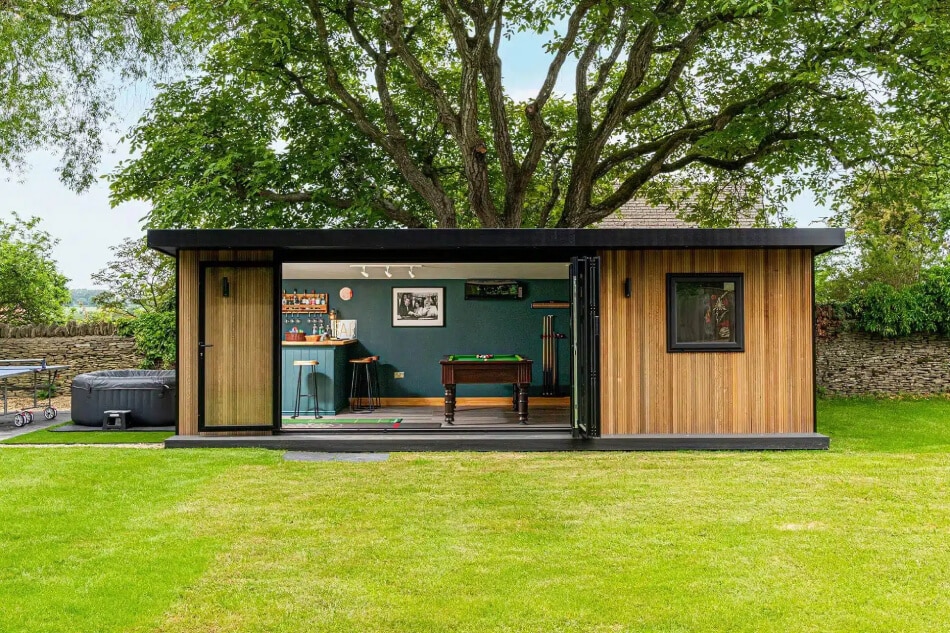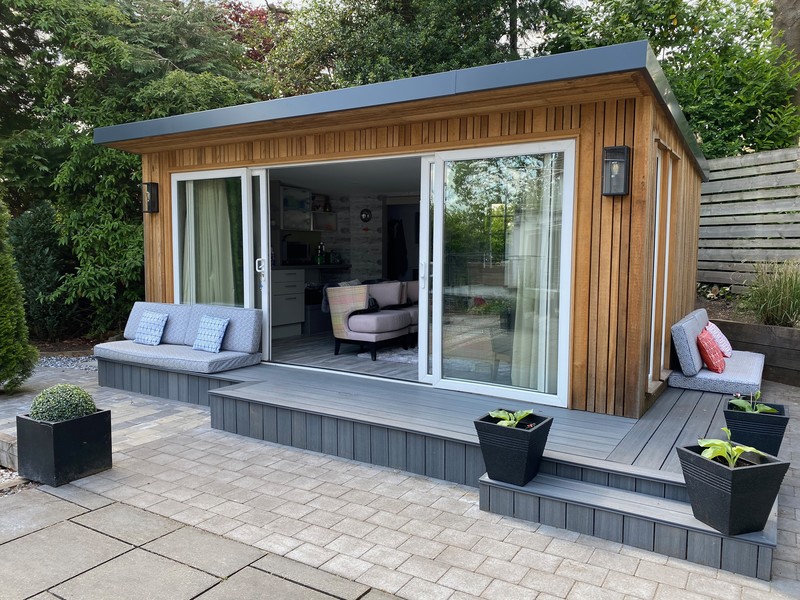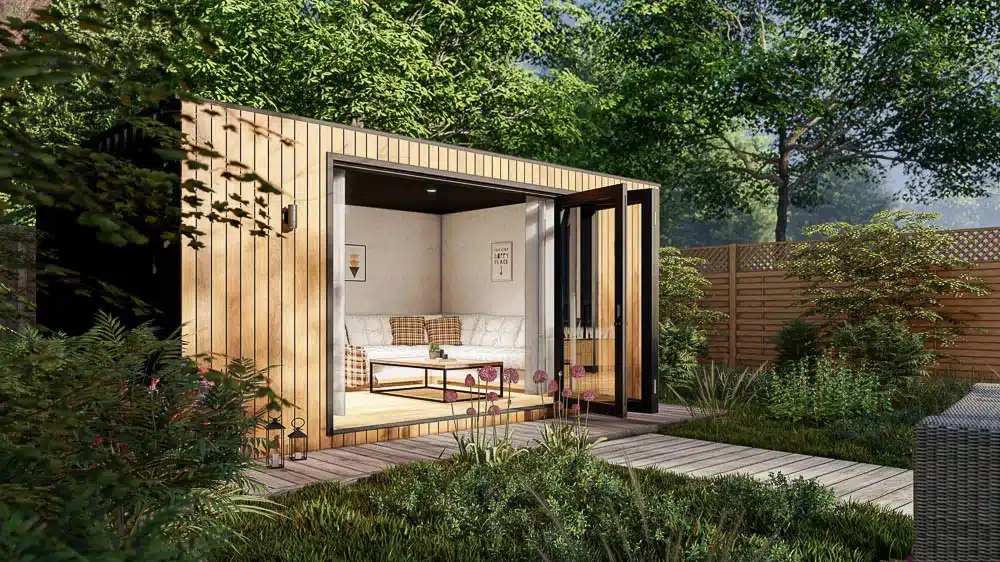Handy News For Planning Permission For Garden Conservatories
Handy News For Planning Permission For Garden Conservatories
Blog Article
What Is The Planning Permission Required For Garden Rooms As Well As Other Changes Of Use?
The notion of "change in use" is important when constructing garden offices, conservatories or outhouses. Here are the key aspects to be considered when it comes to planning permission related to changes in use: Change from residential to non-residential Use:
Planning permits are required when you're converting an unresidential area (like the farm garage or a building) into an office in the garden or in a living space. This is because there will have to be a change of use classification.
Garden Rooms are Living Space:
A room that is used in the garden as an independent living unit (e.g. guest house or rental unit) is considered a change of usage. To ensure that the structure is in compliance with rules and regulations for homes, planning permission will be required.
Business Use:
It is possible to require planning permission if you intend to use a garden room or conservatory to serve as a business space like an office or a workplace that is frequented by employees or guests. This is due to potential impact on your neighborhood, such as traffic, sound, and parking.
Community or educational use
Planning permission is also needed to convert the garden structure into an area for educational or community purposes (such as a room for meetings or classroom). Local authorities will determine if the location is suitable and what impact it may have on the local area.
The impact on local infrastructure
Planning permission is required for any change in use that have a significant impact upon local infrastructure. The impacts of these changes will be assessed by the local authority for planning as part of the process for submitting an application.
Dual Use
If a property is going to have mixed uses (such as commercial, residential or part-commercial), planning permission is usually required to clearly define and govern the different functions within the property.
A Boost in Footfall and Traffic
The local planning authority has to accept the proposed change should it lead to an increase in footfall or traffic.
Building Regulations compliance:
Although it's not a strictly planned issue, any changes in use should comply with the building codes to ensure the highest standards of security, energy efficiency, and health. This is essential in the process of converting areas into habitable ones.
Environmental Impact:
Planning permission is required to permit any alteration in usage that could impact the environment. This could include converting farms into residential properties. Environmental assessments might be required as part of the application.
Effect on Community and Amenities:
An important consideration is how the changes will impact amenities for the community as well as the area's character. To take an example the idea of transforming a room within the garden to a coffee shop requires approval from the planning department. This is to ensure it aligns itself with the community's plans and preserves the local amenities.
The following regions are classified as:
Modifications to the use of land are strictly controlled in designated areas such as National Parks or Areas of Outstanding Natural Beauty. This is to protect the character and appearance of these areas. In these cases the need for planning permission is required.
Local Planning Policies
Local planning authorities might have different policies regarding changes in usage. You should consult these policies to know which types of changes are permitted and the requirements that must be met.
Planning permits are typically needed for any significant change in the use or location of a gardenroom, conservatory outhouse, office, or extension. The new usage should be appropriate for the area, conform to the local and federal policies on planning and address the potential social and environmental impacts. It is important to consult with your local authority on planning at an early stage in the process, to be able to identify the exact requirements and get the necessary approvals. Read the recommended contemporary garden room for blog examples including costco outhouse, myouthouse, garden room or extension, outhouses, ground screws vs concrete base, outhouse buildings, garden office hertfordshire, garden room heater, composite garden rooms, garden office hertfordshire and more.
What Kind Of Planning Permission Is Needed For Gardens, Rooms Etc. In Terms Of The Impact On The Environment?
If you're planning to build garden rooms, conservatories, outhouses, garden offices or extensions, considering the environmental impact is crucial and can determine the need for planning permission. Here are the most important environmental factors to consider The following are the most important considerations: Wildlife and biodiversity:
Planning permission is required when a proposed construction affects local habitats for wildlife (such as hedgerows, trees, or ponds). To minimize and evaluate the impact, an eco-survey may be required.
Protected Species And Habitats
Permission is needed for protected species living on the property (e.g. bats, newts or other species) or if they are located in protected habitats or nearby (e.g. Sites of Special Scientific Interest SSSI). Particular measures must be implemented to protect them.
Tree Preservation Orders (TPOs):
Planning permission could be required if the project involves the removal or alteration of trees covered under TPOs. The local authority must evaluate the impact on the proposed structure and could need other mitigation measures or a replacement plant.
Risk of flooding and Water Management Risk and Water Management
Planning permission might be required to develop in flood-prone areas or near waterbodies. If the building is to be constructed, a flood-risk assessment (FRA) that includes drainage options and a determination of whether it is likely to increase flooding risk or not is required to be conducted.
Sustainable Construction Practices
It is possible to obtain planning approval in order to use sustainable construction methods and materials. This may include considerations regarding energy efficiency, insulation as well as the carbon footprint of construction materials.
Drainage and Surface Water Runoff:
The impact of new construction on surface runoff and drainage are major environmental concerns. Planning permission allows for the construction of drainage systems that will prevent flooding and waterlogging.
Stability of the soil and stability of the land:
The planning permission will be required if construction is likely to affect soil quality or stability. The planning permission is required if the construction is likely to alter soil quality or stability of the land.
Air Quality
Planning permission is required for developments that may impact local air quality, such as those located near industrial areas and major roads. The level of air pollution must be within acceptable levels and mitigation measures should be implemented.
Noise Pollution:
Planning permission will be necessary if the garden or an extension would likely create significant noise, like an music studio or workshop. The local authority will assess noise levels, potential impacts on neighbours and the environment.
Waste Management:
Effective waste management throughout and post-construction, is essential. Planning permission is required to ensure that adequate arrangements are made for waste disposal and recycle while minimizing environmental impacts.
Energy Efficiency
Planning permission can include the need to improve energy efficiency, like the use of solar panels, high-performance glazing or other green technology. This can reduce the carbon footprint of the building.
Compliance to Environmental Regulations:
Environmental protection laws, like the UK Environmental Protection Act, should be adhered to by development. Planning permission is required to ensure that the development is in compliance with all legal and environmental requirements.
Summary: The planning permission granted for conservatories, gardens, or outhouses as well as garden extensions and offices should be based on a wide range of environmental impact. In order to ensure that the development proposed is environmentally responsible, it is vital to seek out local authorities for planning prior to the planning stage as you can. Check out the best garden room extension for more info including outhouse builders, garden buildings , what is a garden room, 4m x 4m garden room, garden rooms near me, costco outhouse, best heater for log cabin, garden room permitted development, costco garden office, costco garden office and more.
What Permission Do I Need To Use My Garden, Etc. With Regard To Agricultural Lands
Consider the following restrictions and permissions when creating a garden room conservatory, garden office, outhouse or an extension to agricultural property. Here are some important things to consider The following: Change of Use
Agricultural land is generally designated for farming, and the like. The conversion of the land to gardens or residential structures usually requires permission for planning. This is due to the fact that it is a change from its original purpose as an agricultural one.
Permitted Development Rights:
Agriculture-related land has typically different rights to development from residential land. In some cases agricultural buildings can be erected with no planning permission. These rights, however only apply to agricultural structures.
Size and Scale
The scale and size of the structure proposed could influence whether a planning permit is required. Planning permission is typically needed for large structures or structures that cover a larger area.
The impact on agricultural use
Planning permission might be required in the event that the construction will affect the use of land for agriculture in particular by restricting the amount of space that is available for livestock and crops.
Green Belt Land:
Additional restrictions are imposed on agricultural land that is additionally designated Green Belt to help prevent urban sprawl. Planning permission is typically required to construct any new structure in Green Belt land.
Design and Appearance
The new structure should be constructed and designed in a manner that is in keeping with the rural character of the area. The permission for planning will guarantee that the building won't negatively alter the visual or landscape amenities.
Environmental Impact:
Environmental impact is a consideration for any construction on agricultural land. A study of the environment may be required for planning approval to ensure any new construction will not affect wildlife habitats or local ecosystems.
The proximity of existing structures
The proximity of the proposed office or garden to existing agricultural buildings can influence the planning requirements. The structures near farm buildings can be viewed differently than those built on open fields.
Access and Infrastructure
Consideration should be given to the impact of the proposed structure on existing infrastructure such as roads, waste management, and water supply. Planning permission will determine if the existing infrastructure is able to support the construction.
Use Class Order
The law of planning defines certain types of land that are suitable to be used for agricultural purposes. To be in compliance with local laws or regulations, modifying the use classes to include structures that are not agricultural usually requires approval from the planning department.
Local Planning Policies
Local planning authorities have their own policies regarding agricultural land. These policies will help determine the extent to which planning permissions are granted to construction projects that are not agricultural, while taking into account aspects like local development plans and community needs.
National Planning Policy Framework
In the UK National Planning Policy Framework is a framework which provides guidelines on development and land use. The NPPF will be utilized to determine the validity of permits granted for buildings built on agricultural land. This framework emphasizes sustainable development, rural protection and conservation.
In short it is clear that planning permission for garden rooms, conservatories, outhouses, garden offices, or extensions on agricultural land is generally required because of the need to alter the land's usage and ensure that it is in compliance with local and national plans. To find out the exact requirements and to obtain the required approvals, it is essential to consult local planning authorities. Have a look at the recommended outhouse for blog info including what size garden room without planning permission uk, outhouse for garden, garden rooms in St Albans, costco outhouse, garden rooms in St Albans, outhouse for garden, outhouse garden, small garden office, composite summer house, outhouse and more.